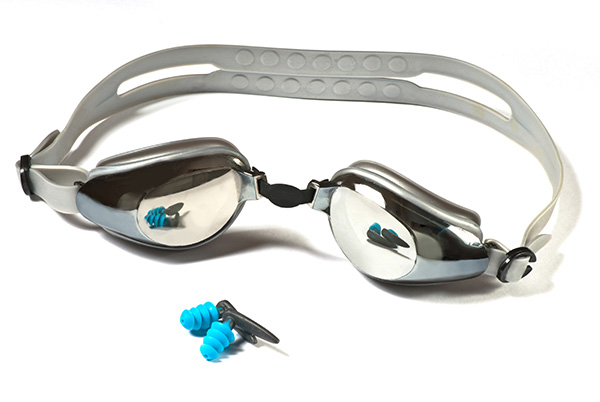
What is Swimmer’s Ear?
Despite its name, Swimmer’s ear isn’t limited to pool rats and beach bums. Swimmer’s ear is also known as otitis externa. An infection of the outer ear canal, Swimmer’s ear has its laymen’™s terms moniker because the malady is often brought on when water remains in the ear, creating a moist environment that encourages bacterial growth. However, other factors and issues can cause otitis externa, such as damaging the thin layer of skin lining the ear canal by inserting a probe, such as a finger or cotton swab, into the ear.
Symptoms of swimmer’s ear
Swimmer’s ear symptoms are usually mild on the onset of the infection, but progress as the infection begins to flourish. Mild symptoms include slight redness inside the ear, mild discomfort made worse by pulling on the outer ear and clear and odorless drainage from the ear. As the symptoms worsen, the sufferer may notice, increasing pain, more intense itching, discharge of pus, feeling of fullness inside the ear and partial blockage of the ear canal and decreased or muffled hearing. In advanced stages of Swimmer’s ear, an individual might suffer severe pain that radiates down the face, neck or side of one’s head, complete blockage of the ear canal, swelling of the lymph nodes in the neck and a fever. It’s important to call a doctor at the initial onset of the symptoms, before they become severe or advanced. If symptoms include severe pain or fever, go to the emergency room.
Treating swimmer’s ear
Swimmer’s ear is usually easy to treat with eardrops. Like most infections, the sooner it is diagnosed and treated, the less serious the complications will be from the infection. Long-term complications of Swimmer’s ear are rare, but can occur. Temporary hearing loss is most common. As the infection clears up, the muffled hearing an individual most likely experiences due to Swimmer’s ear will diminish and become more clear. Swimmer’s ear becomes chronic if an individual suffers from it for more than three months. When this becomes the case, the Swimmer’s ear is most likely caused by a rare strain of bacteria, an allergic skin reaction, an allergic reaction to the antibiotic eardrops or a combination of a bacterial and fungal infection. A deep tissue infection is also possible, although this complication is highly unlikely and is more common with individuals who have chronic Swimmer’s ear. Your regular doctor can test you for Swimmer’s ear. He or she will examine your ear and, symptoms such as redness, swelling, scales and flakes of skin, will be a telltale sign of the condition. If the severity of your Swimmer’s ear indicates additional treatment, your doctor will likely recommend an appointment with your hearing healthcare professional for follow up care.

